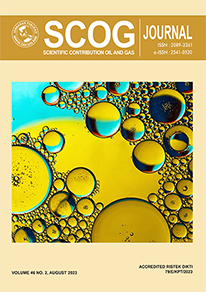The Linear and Non-Linear Background Energy Approach in The Seismic S/N Ratio Enhancement
DOI:
https://doi.org/10.29017/SCOG.46.2.1572Keywords:
side-swept, coherent noise, random noise, f-k transformation, ï´-p transformation, surface consistent deconvolotionAbstract
Side-swept is often understood as a side sweep of seismic waves that occurs on the surface. This understanding creates confusion when considering that side-swept is a part of linear function, in fact side-swept could be in the form of sweeping waves from the reflector on the side, so side-swept is a non-linear function like a signal. The implications for noise reduction with the t-p transformation becomes more complex. The elimination of side-swept in this study, relies on an application using an algorithm developed by Hampson (1987). Initial data conditioning preparation should be needed to clarify the difference between linear and non-linear functions through static refraction correction and velocity analysis, then coherent noise elimination (ground-droll) is carried out through f-k domain transformation, as well as random noise through f-x domain transformation. Side-swept is eliminated in t-p domain. Energy observation shows the remaining noise energy caused by coherent noise, random noise and non-linear side-swept functions. It proves that it is difficult to remove a non-linear function that overlaps the reflector signal. The best step is to minimize coherent (linear) noise and random noise by consistently using an amplitude correction indicator on the surface and performing velocity analysis especially for the suspected power spectrum as an effort to attenuate side-swept wave interference on the reflector signal. Finally, the signal restoration efforts due to non-linear noise attenuation, is carried out by surface consistent deconvolutionDownloads
Published
Issue
Section
License
Copyright (c) 2023 © Copyright by Authors. Published by LEMIGAS

This work is licensed under a Creative Commons Attribution 4.0 International License.
Authors are free to Share — copy and redistribute the material in any medium or format for any purpose, even commercially Adapt — remix, transform, and build upon the material for any purpose, even commercially.
The licensor cannot revoke these freedoms as long as you follow the license terms, under the following terms Attribution — You must give appropriate credit , provide a link to the license, and indicate if changes were made . You may do so in any reasonable manner, but not in any way that suggests the licensor endorses you or your use.
No additional restrictions — You may not apply legal terms or technological measures that legally restrict others from doing anything the license permits.














